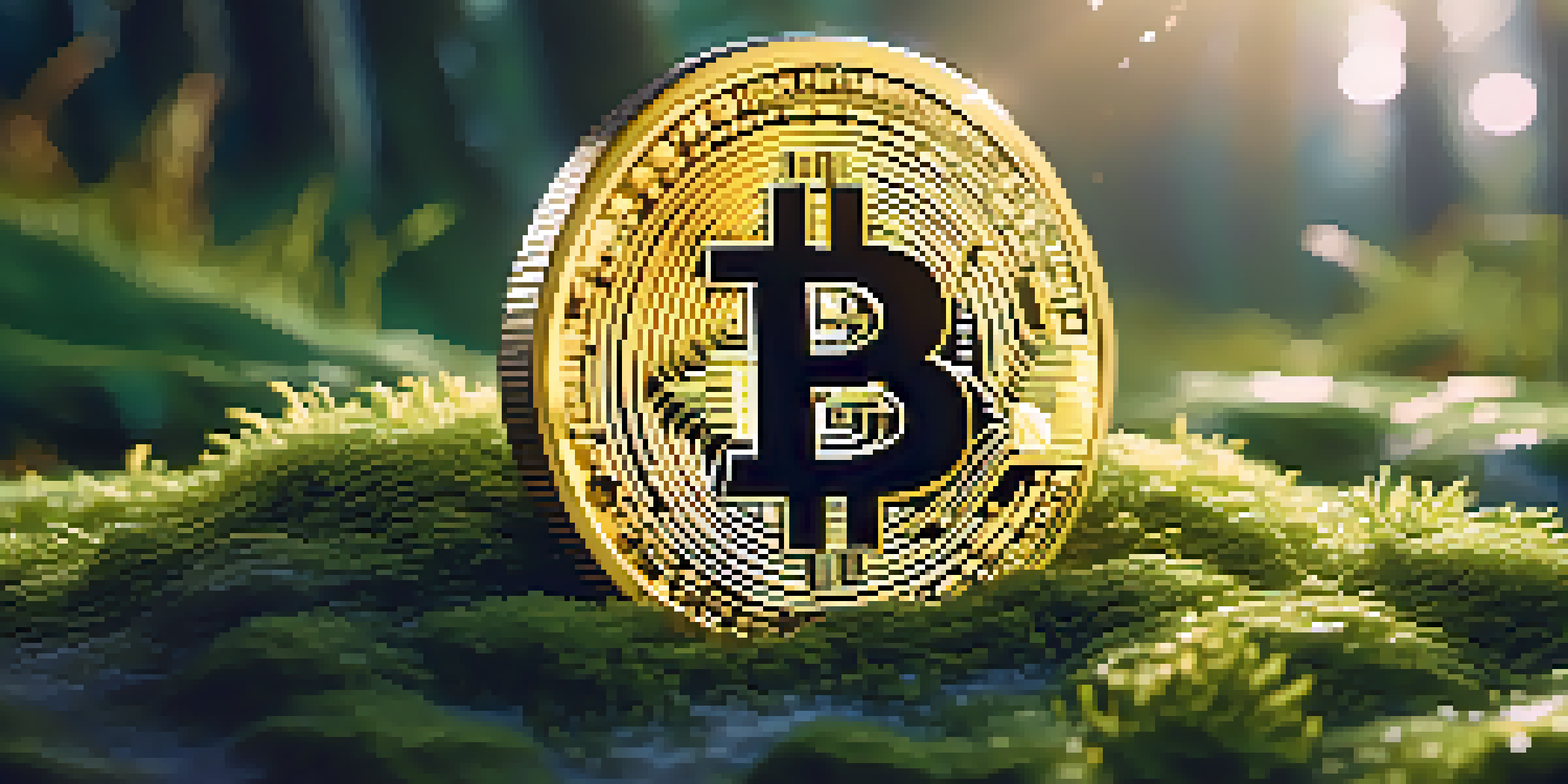Bitcoin's Scarcity: A Key Feature for Store of Value

What is Bitcoin's Scarcity and Why Does It Matter?
Bitcoin's scarcity refers to its limited supply, capped at 21 million coins. This hard limit is a fundamental feature that sets Bitcoin apart from traditional currencies, which can be printed at will by central banks. The finite nature of Bitcoin creates a sense of value, similar to precious metals like gold, which have a limited supply in the earth's crust.
Bitcoin is a technological tour de force.
This scarcity is crucial for its role as a store of value. As demand for Bitcoin increases, the limited supply can lead to higher prices, making it an attractive option for investors seeking to preserve wealth. In contrast, inflationary currencies can lose value over time, making them less reliable for long-term savings.
Moreover, understanding scarcity helps potential investors grasp why Bitcoin is often compared to digital gold. Just as gold's rarity drives its price, Bitcoin's capped supply nurtures a similar dynamics, contributing to its appeal in today's financial landscape.
The Role of Supply Halving in Bitcoin's Scarcity
Supply halving is a unique event in Bitcoin's lifecycle that underscores its scarcity. Approximately every four years, the reward for mining new blocks is cut in half, reducing the rate at which new bitcoins are created. This mechanism not only reinforces scarcity but also introduces predictability into Bitcoin's supply schedule.

The last halving occurred in May 2020, and it reduced the block reward from 12.5 to 6.25 bitcoins. This event historically leads to increased demand and price appreciation, as investors anticipate the dwindling supply of new coins. It’s a classic case of supply and demand dynamics at work.
Bitcoin's Fixed Supply Drives Value
Bitcoin's capped supply of 21 million coins enhances its appeal as a store of value, similar to precious metals like gold.
As Bitcoin becomes harder to mine, its perceived value tends to rise, creating a cycle that reinforces its status as a solid store of value. By understanding supply halving, investors can better appreciate how Bitcoin's scarcity is managed over time, further enhancing its allure.
Comparing Bitcoin's Scarcity to Traditional Assets
When comparing Bitcoin’s scarcity to traditional assets, such as real estate or stocks, we see some fascinating contrasts. Real estate can appreciate due to location and demand, but it can also be built upon, increasing supply. Stocks can be issued in greater quantities, diluting the value of existing shares, but Bitcoin's supply is immutable.
The future of money is digital currency.
Investors often turn to gold as a benchmark for scarcity, given its historical role as a hedge against inflation and economic uncertainty. However, unlike gold, Bitcoin can be divided into smaller units called satoshis, making it more accessible to a broader range of investors. This divisibility allows Bitcoin to fit into modern financial systems in ways that traditional assets cannot.
Ultimately, the comparison highlights Bitcoin's unique position in the investment landscape. Its fixed supply, coupled with high divisibility and ease of transfer, positions it as a compelling alternative to traditional stores of value.
How Scarcity Influences Bitcoin's Market Perception
The perception of scarcity plays a vital role in how Bitcoin is viewed in the market. As more people learn about its limited supply, they often see it as a hedge against inflation and economic instability. This growing awareness fuels interest and investment, driving demand and, consequently, price.
Media narratives around Bitcoin often emphasize its scarcity, especially during market rallies. When headlines highlight Bitcoin's capped supply, it can create a sense of urgency among potential investors, prompting them to buy before prices rise further. This cyclical relationship between perception and reality is a powerful driver of Bitcoin's value.
Supply Halving Boosts Scarcity Perception
The supply halving event, which reduces the rate of new bitcoins created, reinforces scarcity and often leads to increased demand and price appreciation.
Moreover, as institutional investors enter the market, their interest in Bitcoin’s scarcity is likely to grow. With large firms recognizing the potential of Bitcoin as a digital asset, a new layer of credibility is added, reinforcing its status as a scarce and valuable resource.
Challenges to Bitcoin's Scarcity: The FUD Factor
Despite its established scarcity, Bitcoin faces challenges and skepticism from various quarters. Fear, Uncertainty, and Doubt (FUD) can spread quickly, especially during market downturns. Skeptics might argue about the potential for future forks or regulatory changes that could impact Bitcoin's supply dynamics.
For instance, discussions around the possibility of Bitcoin being replaced by new cryptocurrencies can create doubt about its long-term scarcity. This uncertainty can lead to volatility in the market, prompting investors to question the reliability of Bitcoin as a store of value.
However, many proponents argue that Bitcoin's established network and first-mover advantage provide a strong foundation against such challenges. While FUD can cause short-term fluctuations, the fundamental principles of scarcity and community support continue to drive Bitcoin's long-term value.
The Future of Bitcoin and Its Scarcity
Looking ahead, Bitcoin's scarcity is expected to remain a central theme in its evolution. As we approach the next halving event in 2024, many analysts predict renewed interest and investment. This anticipation of reduced supply could create a bullish sentiment among investors, further embedding Bitcoin's reputation as a store of value.
Moreover, as more financial institutions embrace Bitcoin, its scarcity could be recognized more widely as a crucial feature. Institutional adoption can lead to increased legitimacy and stability in the market, attracting even more investors who value scarcity as a measure of worth.
Market Perception Influences Bitcoin's Worth
Growing awareness of Bitcoin's scarcity fuels interest and investment, driving demand and reinforcing its status as a valuable digital asset.
Ultimately, Bitcoin's future will likely revolve around its limited supply, shaping its role in the global economy. As digital currencies continue to gain traction, understanding and appreciating Bitcoin’s scarcity will be key for anyone looking to navigate this evolving landscape.
Conclusion: Embracing Bitcoin's Scarcity as an Asset
In conclusion, Bitcoin's scarcity is not just a feature; it's a cornerstone of its value proposition as a store of wealth. By understanding its limited supply, investors can appreciate why Bitcoin is often viewed as a hedge against inflation and monetary instability. This perspective is vital for anyone considering Bitcoin as part of their investment strategy.
As the digital currency landscape evolves, Bitcoin’s scarcity will continue to be a defining characteristic that attracts interest from both retail and institutional investors. By recognizing the importance of scarcity, you’re better equipped to make informed decisions in this dynamic market.

In embracing Bitcoin's scarcity, you're not just investing in a cryptocurrency; you're participating in a broader financial revolution that challenges traditional notions of value and wealth preservation.